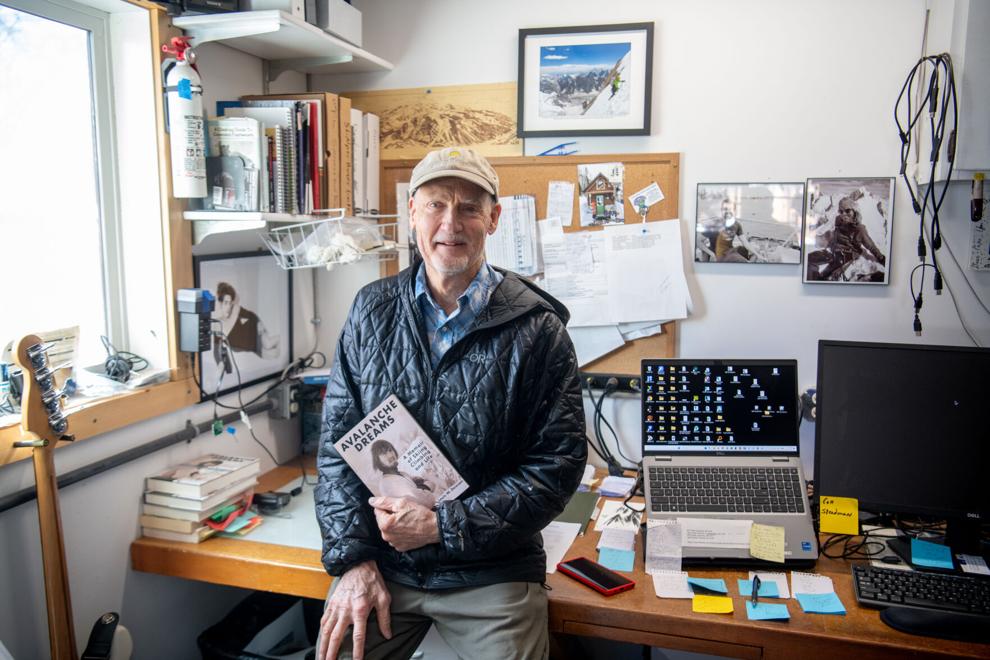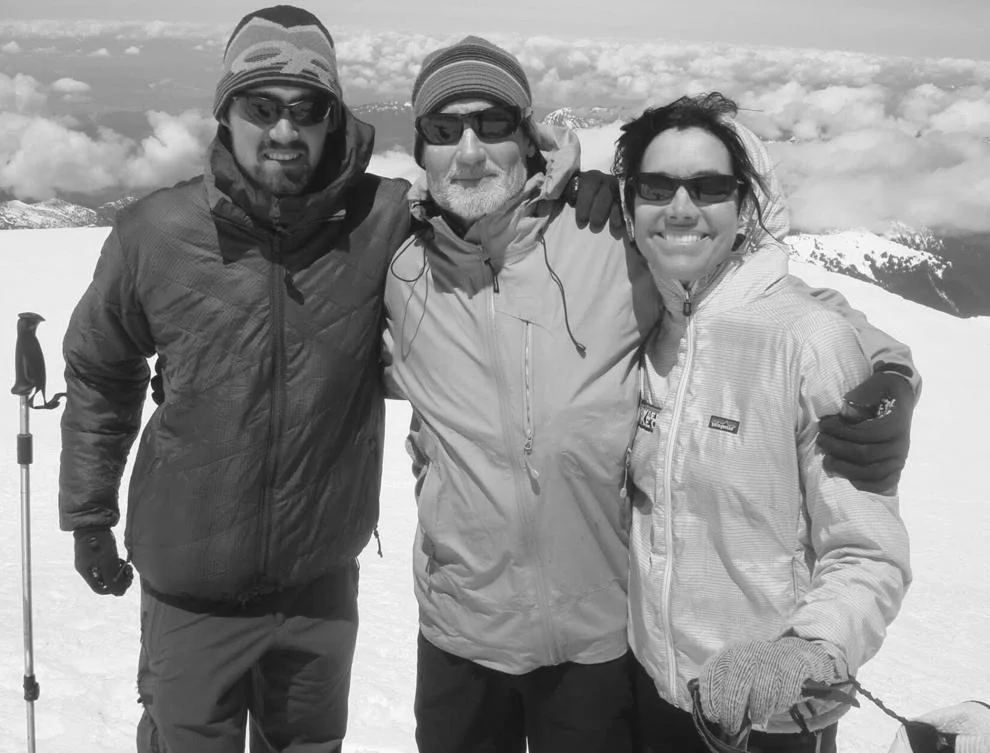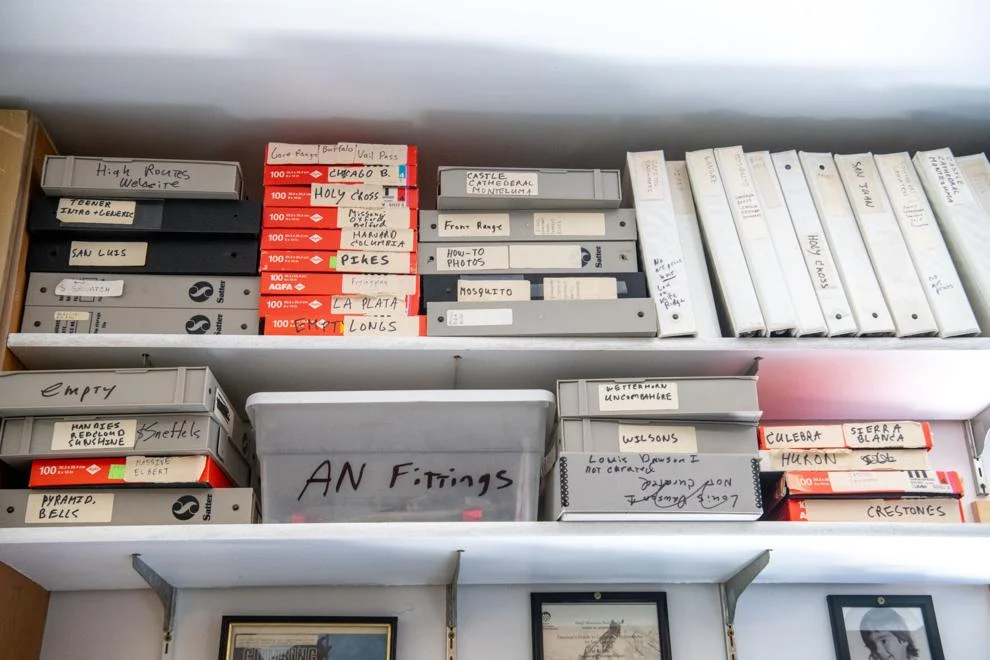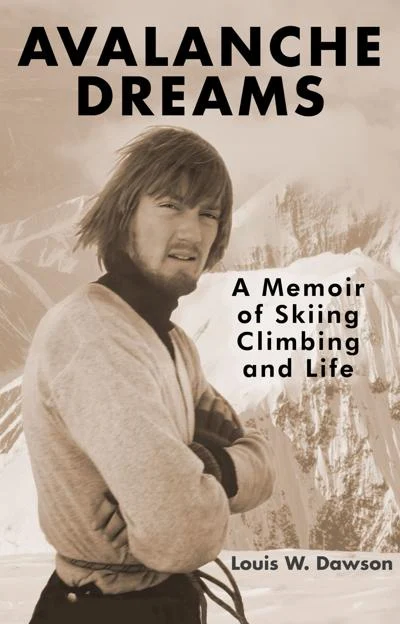


Lou Dawson might be the most courageous person in the Roaring Fork Valley, but not because of the death-defying exploits he undertook for decades as a renowned rock climber and ski mountaineer.
Dawson, 72, released a memoir Feb. 29. It’s a no-holds-barred look into a mirror that few people are brave enough to undertake. He’s dead honest about the devil-may-care attitude he harbored as a drug-addled, adventure-crazed teenager unleashed in hippie-era Aspen of the 1960s and early ’70s. He swallows a huge dose of humility in the pages when recounting how his drive to test physical limits got himself into trouble on numerous occasions and, more contritely, how others nearly paid the ultimate price for his poor decisions.
But “Avalanche Dreams: A Memoir of Skiing, Climbing and Life” isn’t an exercise in self-flagellation. There’s a fascinating look at Aspen life in the 1960s, a recounting of a dirtbag climber lifestyle, an unearthing of the roots of Colorado ski mountaineering and a roadmap of Dawson’s journey to happiness and awakening as a husband and father.
“So you’ve got the kitchen sink here, man,” Dawson said with a laugh in a recent conversation at his Carbondale studio.

“Avalanche Dreams” is available on Amazon. Dawson plans to hold readings and book signings later this year in the Roaring Fork Valley on dates to be determined.
The 360-page book was the result of six years of work, with equal parts of research, writing and editing. Dawson has been a prolific writer of mountain guide books, adventure articles and the WildSnow.com blog, but he said he had to improve a retrospective writing style “by a quantum leap” for the book.
He pulled it off masterfully. The book is a page-turner. It moves at a pace equal to Dawson’s various searches to soothe his soul and find meaning in his life.
In a section about a climbing trip to Denali, for example, many readers will feel claustrophobic when Dawson and his colleagues are holed up in a snow cave for several days and nights to wait out ferocious weather so they can make their summit attempt. Through Dawson’s writing you can imagine the smells of nine stinky young men cramped into quarters. When Dawson wretches from a combination of exertion, altitude and dwindling food supply, your stomach tenses up. When writing about how the crew plowed through their rations, Dawson doesn’t settle for saying they ate a lot out of necessity. Instead, he wrote, they were “burning calories like human bonfires.”
In a different section, Dawson writes of a January 1974 climb up a particularly perilous line on Capitol Peak with renowned Roaring Fork Valley climber Michael Kennedy. Dawson describes the crux move and notes that if he messed up, he would be “bouncing off ledges, grinding over the rough rock like a log in a woodchipper.”

The book is crammed with such passages that invite the reader to go back over a sentence or paragraph to savor them. He’s got interesting stories because he’s been on interesting journeys. The copy is sprinkled with 82 images that help tell the story.
“The gurus say everybody’s life has a plot and as the years roll by and you look back on your life, you see the plot,” Dawson said in an interview with the Aspen Daily News. “For me with ‘Avalanche Dreams,’ there’s a lot of healing and forgiveness that went on that I hope I either share in the book or imply and might inspire other people to see those things as a goal.”
And then there’s the part about looking in a mirror. Dawson reveals some tough things about his parents and his family life after they relocated from Texas to Aspen in 1966. His mom and dad embraced the good, the bad and the ugly qualities of the hippie life. It had consequences for the entire family.
“When you write a memoir, there’s cringy stuff that goes in there but by the time you’re done writing it and realizing you’re going to share it, the cringe factor goes down lower and lower and lower until it will just feel like this is my story and it all fits together and it doesn’t feel cringy at all anymore,” he said. “Maybe that’s part of the benefit of the process. I know I’ve got some stuff in there that I definitely felt cringy about but I don’t feel cringy about it anymore. This was my life and I’m not going to try to hide it.”
Being in the thick of a hippie upbringing, Dawson said he didn’t ponder whether it was “normal.” It was a time when the philosophy of “rules are for fools” reigned. He had little direction or structure once his family arrived in Aspen.
“In some ways it was beneficial and made me who I am so I’m not going back and trying to relive and somehow repair it,” he said. “On the other hand, all forms of upbringing have their downsides. I created my own structure with climbing and backcountry skiing.”
He immersed himself in rock climbing during his teens and 20s. Independence Pass was a formative playground. He took repeated trips to Yosemite. He was among desert rats who jumped at the chance to climb difficult towers around Moab. He regularly brushed elbows with famed figures of the climbing scene locally and in California. Many of them are no longer here.
“I think for the Aspen crowd, there’s a lot in here that people will find enjoyable,” he said. “For the older crowd, there will be individuals in there that people know or knew, and that will be fun for people. My take is a little different. Some of these guys are my heroes but there’s also their cracks and flaws, especially in myself.
“It is funny because when you write this kind of book, you’re not writing it for your family and the people that are in the book,” he continued. “You’re writing it for a general audience and you hope they’ll get some value out of it, some takeaways and some entertainment. Maybe they learn a few things about a world they’re not familiar with and enter into a magic kingdom so to speak. In my case, a magic kingdom of mountaineering and climbing and extreme skiing.”

His magic kingdom was complete with dungeons and dragons. In one recounting, he almost pushes a smaller female companion too hard on a backcountry ski tour over East Maroon Pass to Crested Butte. Once he realized she wouldn't be able to make it to town, they took emergency shelter in an old cabin in Gothic.
In another section, he recounts dropping acid before dropping down Keno Gulch off the shoulder of Aspen Mountain. He breaks his left leg a thousand feet or so above the Castle Creek Valley floor. That triggers a widespread community effort to evacuate him to safety.
In another instance, he gets caught in an avalanche while poaching Highland Bowl years before it opened to the public. He was fortunate to survive, as he describes in heart-thumping detail. He broke his left leg again and spiraled into a period of despair and loss of direction.
“I was definitely accident prone but I never thought that I was,” Dawson said. “I thought I was some sort of super-resilient mountain guy who could go through these things and come out the other side of it unscathed. And that turned out to not be the case. In fact, it was quite the opposite. I was out there beating myself up, breaking legs and getting caught in avalanches. Like I said in the book, I became the poster child for ‘Ski and Die’ and I didn’t even know. That was the denial I was in and that’s a big part of the memoir.”
Spoiler alert — it was a good woman and their teamwork in conceiving and raising a child that helped Dawson finally find what he was looking for.
Dawson is best known for ski descents of all 54 of Colorado’s peaks above 14,000 feet in elevation. He was inducted into the Colorado Ski and Snowboard Hall of Fame in 2005 as the first person to achieve the feat. He initially didn’t set off to tick off the entire list. After he had already climbed and skied several of them, a friend suggested he shoot for them all and write a guidebook. As Lou’s relationship with his girlfriend, Lisa, evolved and they later married, he became more risk averse, while he was completing the 14ers. Once their son Louie was born, Dawson recounted how it became more difficult to undertake expeditions to complete the final tall peaks while leaving his wife and baby behind. He completed Kit Carson Peak, the last of the 14ers for him, in May 1991.
As a writer, Dawson naturally wants his book to be a success and to make a little money. But he’s already reaped invaluable rewards.
“Really realizing who I was back then has been super valuable and very healing, to just be humbled and humbled enough to let those things bubble up in my mind and write about them,” he said. “I felt really called to present my life arc from the blundering, accident-prone teenager and 20-something to committing to the family life and wanting to achieve excellence in being a husband.”